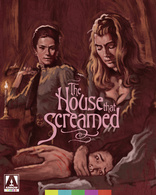The House That Screamed Blu-ray Movie
HomeThe House That Screamed Blu-ray Movie 
La Residencia / The Boarding SchoolArrow | 1969 | 1 Movie, 2 Cuts | 105 min | Unrated | Mar 07, 2023
Movie rating
7.2 | / 10 |
Blu-ray rating
| Users | 0.0 | |
| Reviewer | 3.5 | |
| Overall | 3.5 |
Overview
The House That Screamed (1969)
Mrs. Fourneau owns and runs a school for wayward girls in France. Her absolute discipline has fostered a social order among the girls with rampant sex, lesbianism and torture the norm. Mrs. Fourneau also has an adolescent son she tries to keep isolated from the young women lest he be tainted by sexual relations; she explains that he must wait for a girl "just like his mother". Meanwhile, girls are "running away" (being murdered) one by one, with their corpses and any evidence of their outcome not to be found...
Starring: Lilli Palmer, Cristina Galbó, John Moulder-Brown, Cándida Losada, Mary MaudeDirector: Narciso Ibáñez Serrador
| Horror | Uncertain |
| Mystery | Uncertain |
| Thriller | Uncertain |
Specifications
Video
Video codec: MPEG-4 AVC
Video resolution: 1080p
Aspect ratio: 2.35:1
Original aspect ratio: 2.39:1
Audio
English: LPCM Mono (48kHz, 24-bit)
Spanish: LPCM Mono (48kHz, 24-bit)
Subtitles
English SDH
Discs
Blu-ray Disc
Single disc (1 BD)
Packaging
Slipcover in original pressing
Playback
Region A (B, C untested)
Review
Rating summary
| Movie | 3.5 | |
| Video | 3.5 | |
| Audio | 3.5 | |
| Extras | 5.0 | |
| Overall | 3.5 |
The House That Screamed Blu-ray Movie Review
Reviewed by Jeffrey Kauffman February 12, 2023Some of us non-Spanish speakers might encounter a stumble or two in attempting to pronounce names like that of this film's director, Narciso
Ibáñez
Serrador, and so maybe a little slack needs to be granted to commentator Anna Bogutskaya, who identifies herself right off the bat on her
track as being Spanish despite what she herself states is a surname that wouldn't seem to be anything even slightly close to Iberian. One
way or the other Bogutskaya mentions that Serrador is often credited as being the Spanish Hitchcock (how many "alternate nationality" Hitchcocks
were there, anyway?), but then makes a repeated unfortunate and frankly unforced error of calling the legendary creator of The Twilight Zone Rod
Sterling,
as if Mr. Serling had some kind of silver business on the side, just for those moments when the writing gig wasn't paying the bills.
Joking
aside, Bogutskaya does mention that Serrador actually only directed two feature films, and that his rather outsized reptuation in Spain may be the
result of a television anthology he created called Historias para no dormir, which does indeed sound like a Spanish riff on elements from
Serling's most famous series.
While Bogutskaya states that Historias para no dormir ran for three seasons, what she doesn't
mention is that those seasons had a rather large "hiatus" of around a decade and a half between the second and third broadcast years, which
ironically kept Serrado's show from overlapping with Serling's Night Gallery. Rather interestingly, if Wikipedia is to be believed, Historias para no dormir may have had its
figurative eye on another American anthology series, namely The Outer Limits, since that article alludes in passing to an episode on Serrado's show that seems to have been an
adaptation of one of The Outer Limits' best remembered outings, Demon With a Glass Hand. In terms of Serrado keeping
his eye on American productions, as Bogutskaya can't help but get into, The House That Screamed has certain undeniable tethers to
Hitchcock's Psycho, though rather interestingly considering the
fact that this film hails from 1969 (around when Night Gallery began its regular run), at least some of its plot mechanics may actually
seem like a
precursor to Suspiria.
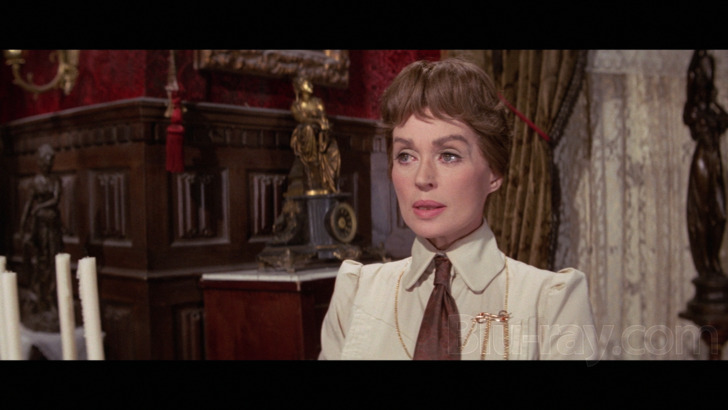
Much as with the Dario Argento masterpiece, The House That Screamed begins with a young female newcomer arriving at a boarding house that seems to have some sinister activities going on. In this case, the story is ensconced in the 19th century, and this particular academy is for so- called "troubled girls". Teresa Garan (Cristina Galbó) is the new arrival, and headmistress Señora Fourneau (Lilli Palmer) takes her and her guardian on a tour of the property, which seems a bit dowdy. Almost immediately Teresa starts noticing suspicious incidents like doors closing for now reason and a hand attempting to open a transom over a door in the room where Fourneau is speaking to Teresa. The fact that that particular scene takes place in a kind of music conservatory room with a wall length mirror and barre (where an actual ballet class is featured later) may at least subliminally reinforce tethers to Suspiria.
Another aspect to this tale might be jokingly compared to such grindhouse fare as The Women in Cages Collection, in that Fourneau is a bit of a sadist, and her "prisoners" (i.e., the girls at what amounts to a reform school) suffer the consequences. Also as with many "women in prison" movies, Fourneau has an acolyte among the captives, Irene Tupan (Mary Maude). Adding into the somewhat swampy emotional dynamics is the fact that Fourneau has a teenaged son named Luis (John Moulder-Brown), who may have a prurient interest in being around so many nubile young females.
This is a surprisingly layered piece at times that explores a number of twisted psychologies, all within the context of (of course) schoolgirls suddenly going missing. Aside from a few shocking incidents, the gore here is in a way truly "Hitchcockian", in that it's often kind of implied rather than dwelled on. A notable exception is at the film's climax, when things definitely go Grand Guignol for a moment or two and a probably none too surprising revelation is offered as to what's behind the missing students. Luckily in this case the studio didn't demand a coda from a "psychologist" explaining things supposedly helpfully.
The House That Screamed Blu-ray Movie, Video Quality 

The House That Screamed is presented on Blu-ray courtesy of Arrow Video with an AVC encoded 1080p transfer in 2.35:1. Arrow's insert booklet contains the following information on the restoration:
The House that Screamed has been exclusively restored by Arrow Films and is presented in its original 2.35:1 aspect ratio with mono sound. Two versions are presented: the 105 minute uncut version, titled The Finishing School (La Residencia), with both original English and Spanish audio; and the 94 minute US theatrical version, re-titled The House that Screamed by distributor American International Pictures.The most salient comment in the above verbiage may be that last bit, which will hopefully serve as a bit of warning that this presentation, while generally nicely organic looking and offering typically nice detail levels, does show some noticeable variances along the way. While some scenes are rather robustly saturated, other moments can look wan and lacking the same densities as other scenes, while still other sections have a slightly flushed, pinkish quality that is somewhere in between the two other extremes. A few isolated scenes look like they may have been sourced from either a secondary element (despite the above verbiage) or alternately an improperly curated section or otherwise damaged section, as grain can suddenly spike and detail levels and saturation diminish. In the best moments, this is a 4.0 presentation, but at its more problematic moments, it may ebb down a bit closer to 3.0 levels. This is another presentation where some anamorphic oddities struck my eyes as looking just slightly on the squeezed side at times. My overall score is 3.75.
The original 35mm camera negative and optical sound negative, both conformed to the longer version of the film, were scanned in 4K resoultion at Codicine Contenidos Digitales Cine and Keyframe Servicios Audiovisuales S.L. , Madrid. Additional HD master materials were sourced from MGM and Park Circus. The film was graded and restored in 2K resolution at R3Store Studios, London.
The audio mixes were sourced from the optical negatvie and the feature master files from MGM and Park Circus. The soundtracks were newly remastered by Bad Princess Productions, London.
Some instances of film and audio damage remain, in keeping with the condition of the source materials.
The House That Screamed Blu-ray Movie, Audio Quality 
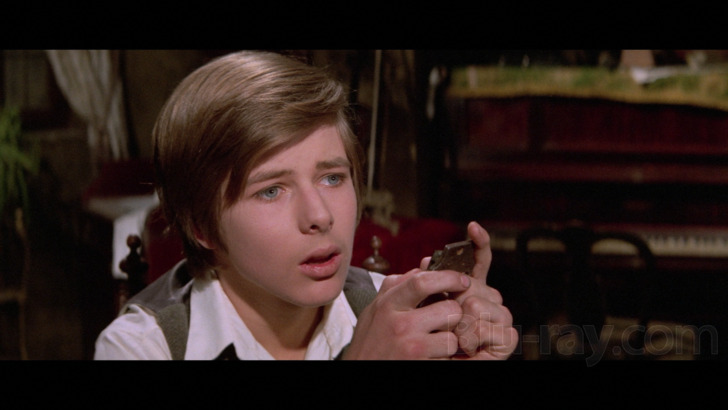
The House That Screamed features LPCM Mono in either English or Spanish. The English language track is arguably a bit more full bodied overall, and if at least some actors may have been dubbed and/or post looped, this track offers the securest match to lip movements. Waldo de los Ríos' score can sound just a tad brash in some of the string cues in particular that utilize higher frequencies. Dialogue is rendered cleanly and clearly throughout. Optional English subtitles are available.
The House That Screamed Blu-ray Movie, Special Features and Extras 
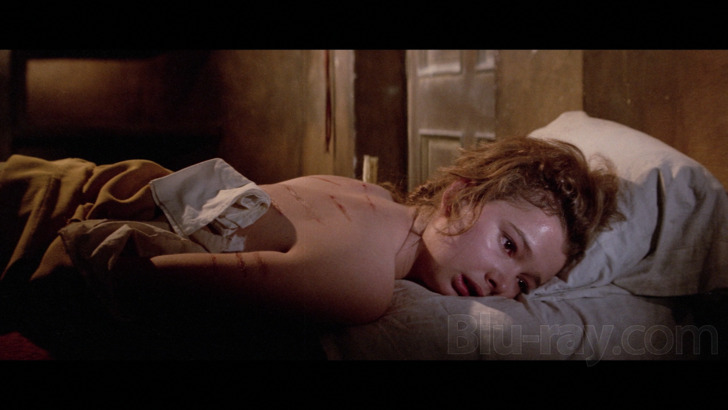
- The Finishing School (Extended Version) (HD; 1:45:11) and Theatrical Version (HD; 1:34:22) are accessible under the Choose Version menu option.
- Commentary by Anna Bogutskaya
- Interviews
- The Boy's Innocence (HD; 24:20) features John Moulder-Brown.
- Interview with Mary Maude (HD; 11:51) is from 2012.
- All About "My Mama" (HD; 9:25) features Juan Tebar, author of the original story of La Residencia. Subtitled in English.
- The Legacy of Terror (HD; 13:55) is an interview with Alejandro Ibáñez, son of director Narciso Ibáñez Serrado. Subtitled in English.
- Screaming the House Down (HD; 20:23) features Spanish horror and fantasy film scholar Dr. Antonio Lazar-Reboll.
- Excerpts from the Spanish Version (HD; 6:09) offers a grabbag of alternate moments mostly presented from standard definition VHS and DVD versions. These come with some text introductions and interstitials.
- Trailer Gallery
- U.S. Theatrical Trailer (HD; 2:04)
- U.S. TV Spot #1 (HD; 00:58)
- U.S. TV Spot #2 (HD; 00:27)
- U.S. Radio Spot #1 (HD; 1:00) plays to key art.
- U.S. Radio Spot #2 (HD; 00:30) plays to key art.
- Image Gallery (HD)
The House That Screamed Blu-ray Movie, Overall Score and Recommendation 
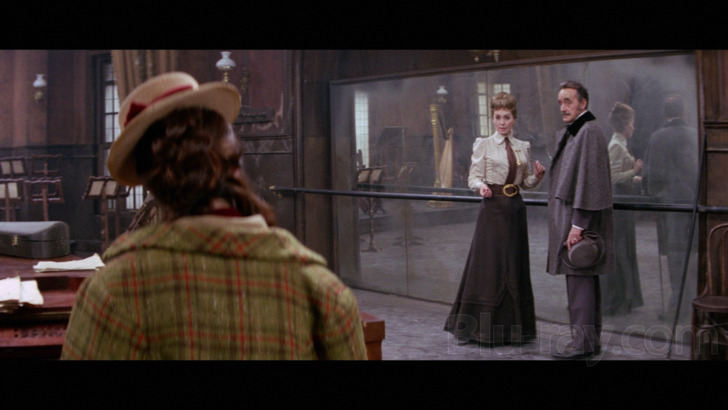
Lilli Palmer is suitably unhinged in this somewhat hyperbolic tale, but suffice it to say she's not the only one. This is a film that manages to traffic in any number of "trashier" aspects while still maintaining a surprising amount of relative "respectability". It seems according to Arrow's own verbiage that the negative may not have been expertly curated, and so there are a few passing anomalies and variances to be aware of, but on the whole technical merits are solid. As usual, Arrow provides outstanding supplements. Recommended.
Other editions
The House That Screamed: Other Editions
Similar titles
Similar titles you might also like

The Blackcoat's Daughter
2015

Murder Mansion
La Mansión de la Niebla
1972

The Night Evelyn Came Out of the Grave
La notte che Evelyn uscì dalla tomba
1971

Deep Red 4K
Profondo rosso
1975

Death Walks at Midnight
Special Edition | La morte accarezza a mezzanotte
1972

Murder Obsession
Follia omicida
1981

Silent Night, Bloody Night
Night of the Dark Full Moon / Death House
1972

Suspiria 4K
1977

Ready or Not
2019

House of the Long Shadows
Special Edition
1983

Cry_Wolf
2005

The Terror
Special Edition | Includes The Little Shop of Horrors
1963

Incubus
1982

Stonehearst Asylum
Eliza Graves
2014

The Hole
2001

Curse of Chucky 4K
Collector's Edition
2013

Dementia 13
Director's Cut
1963

American Mary
2012

Pyewacket
2018

The Boy
2016
